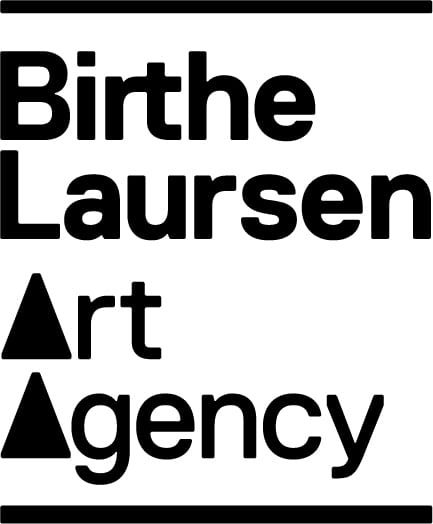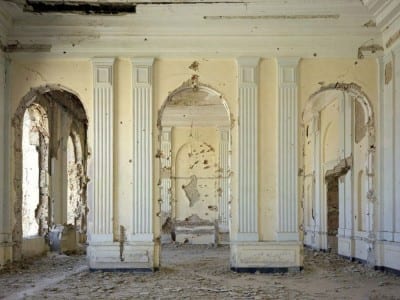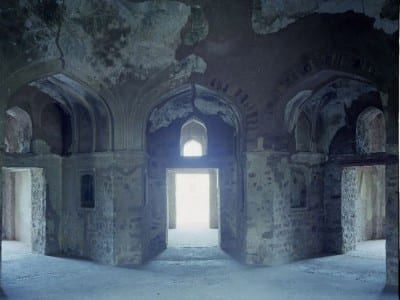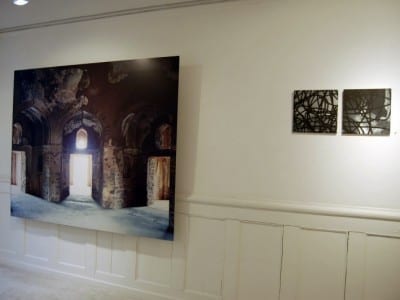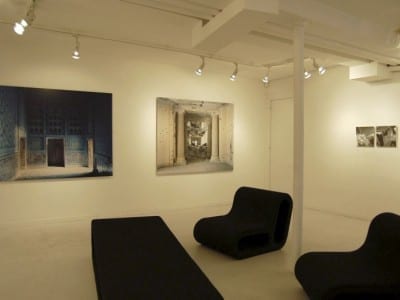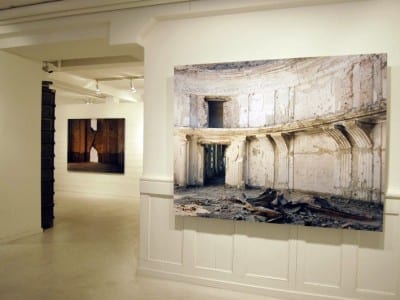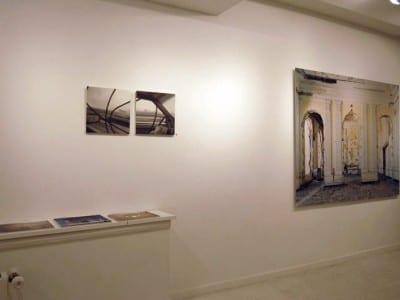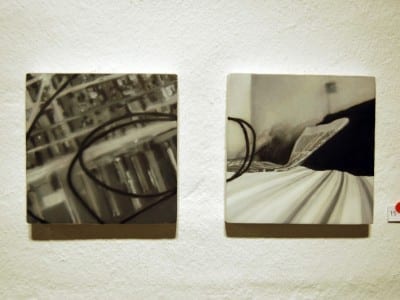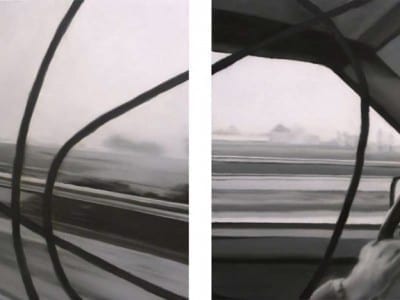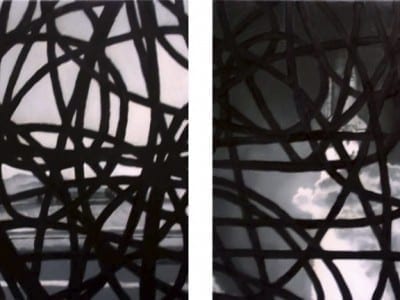BRIAN MCKEE (US) AND TREVOR AMERY (US), PHOTOGRAPHY AND PAINTING
01-12-2005 – 28-01-2006
GALERIE BIRTHE LAURSEN has great expectations to the two young American artists BRIAN MCKEE and TREVOR AMERY. As the first time in Scandinavia, the gallery now presents photos by McKee and paintings by Amery.
Welcome to the opening Thursday December 1st, 2005, 4-6 pm.
The photographs by BRIAN MCKEE are historical images, but they do not only deal with the natural ravages of time. War, violence and vandalism are condensed in his photographs of decadence emptied of people, quivering patiently between construction and ruin, maintenance and destruction. The visual language is constituted by interiors of ruined castles and theatres, photographed by McKee in Afghanistan, Uzbekistan and India. He always photographs with a heavy large-format camera with the help of a tripod, and always with natural light. With a very small stop and an extremely long exposure time of 10-25 minutes, the depth and sharpness of the photographs are obtained, opening the filed of sight of the observer in all directions. In front of the photographs – about 130 x 170 cm, c-print on aluminium, without frame and glass – one gets the impression of being able to entering the pictures, into the space of history. Here one finds architectural witnesses of crimes, destructions and catastrophic events: on a wall in a former distinguished but now abandoned castle one finds shooting holes and craters as a result of grenades. Next to this one finds Arab prayers, functioning as traces of the fear and the extreme feelings once felt by those being in the buildings at a fatal moment. The history is printed in the architecture. The photos of McKee tell a specific story. For instance, the story about the war between Afghanistan and the Soviet Union. But the photos of former luxurious buildings are with their obvious graphic qualities more than just revealing documents of specific historic facts and cultural changes. McKee works in continuation of the American topographic trend in the seventies – Stephen Shore is the most important teacher of McKee – but he also goes beyond the purely documentary. In his pictures, the reference of photography does not suggest one historic truth but rather the past’s presence in the present. The photographs reflect on themes still characteristic for many societies and cultures: construction, conflict, maintenance, decay, collapse, ruin. Brian McKee (1977) lives and works in New York and Vienna.
In contrast to a lot of contemporary painters, TREVOR AMERY mostly works in a grey colour scale. In a simple way, he plays with realism and the abstract painting. The starting point is an attempt to make dynamic the well-established truth that the history of art is founded on creating, representing through lines. In Amery’s paintings, however, lines represent both constructing and destructing forces. In his paintings, lines on the one hand design realistic, stereotyped and melancholic motifs, created in the light of the artist’s private photographs and the visual archive of the modern culture. On the other hand other lines disarm and ruin these realistic but never fully well-composed statements by fencing them. The fence is established through rough, dark lines, almost materialized on the surface of the paintings as transverse graphic beams, straight as an arrow, or circling, sometimes aggressive and dramatic squiggles. The tangible lines don’t seem to allude to anything specific. They seem to come from a world outside the pictures, pointing at it while just being there on the surface of the paintings. They introduce an abstract spontaneity and a playful nonchalance to the realistic statements. The lines are Amery’s particular signature. They indicate that his paintings are layered. They consist of two physical separate picture spaces, hanging next to each other. The some times imprisoning lines now move from the one space to the other, connecting the spaces which otherwise had nothing to do with each other. The linking underlines Amery’s feeling that everything is connected – also outside his own visual universe. The lines limit the gaze of the beholder while tempting it to enter the picture’s imaginary space and see more than what is between the lines – that is to say what is behind them. However, the most important thing is not what is seen in the paintings by the beholder but, how he sees them. Trevor Amery (1983) lives and works in Copenhagen and in Baltimore.
